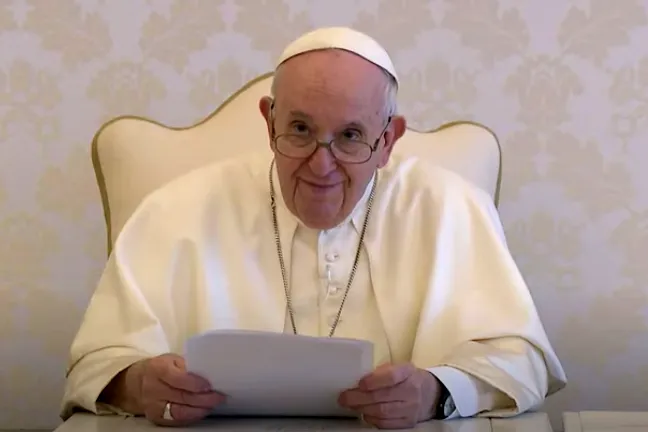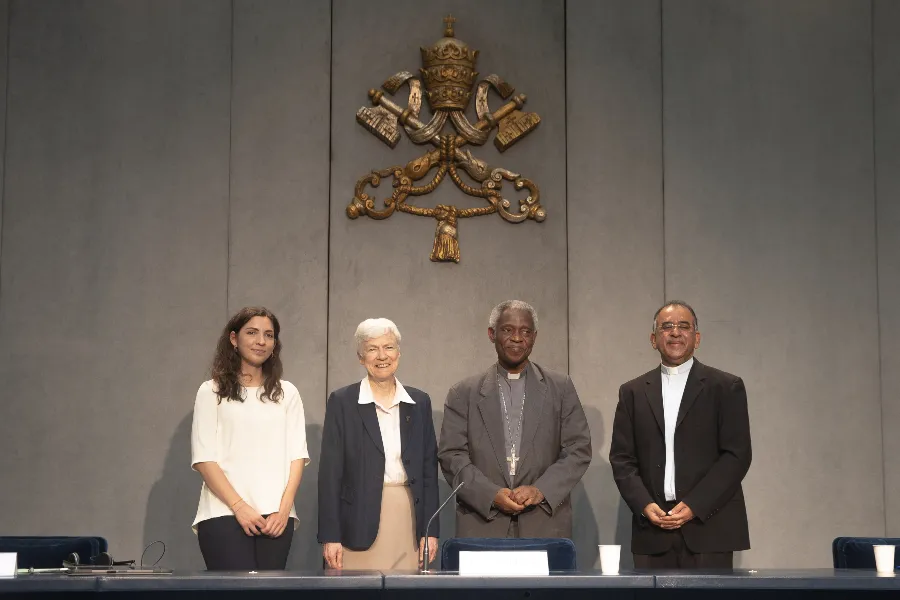
Denver, Colo., May 21, 2018 / 02:00 pm (CNA).- I am not a priest or deacon, or even a counselor or pastoral care worker. But in more than a decade of full-time work in the Church, I’ve often sat with people who are confronting some difficult cross they have to carry, some heavy burden that’s been placed upon them.
I’ve found that the question people most often ask is “why?”
“Why did my spouse abandon me and my children?”
“Why did my baby die?”
“Why do I face these temptations? Why did God make me this way?”
“Why?” is the most common question. And it’s the question that we’re usually least equipped to answer.
We do well with “what” and “how” questions, but “why” is harder.
“What am I supposed to do now?” – “Follow the teachings of the Church, and give the anguish and the suffering to Jesus.”
“How can I live this way?” – “Trust in the Lord, stay close to the sacraments, lean on the community of the Church- on saints, family, friends, pastors, and counselors.”
“Why did this happen to me?” – “I…I don’t know.”
We all want coherent and sensible narratives to explain the circumstances of our lives. Looking for those narratives seems to be a part of coping with difficulty or tragedy. But sometimes there are no clear answers. And sometimes, when we can’t find them, we create them in our minds- we call this the narrative fallacy.
The essayist Nassim Taleb says that the narrative fallacy “addresses our limited ability to look at sequences of facts without weaving an explanation into them, or, equivalently, forcing a logical link, an arrow of relationship upon them.”
A few years ago, I sat with a woman who had suffered terrible abuse. She was talking with me about her experience. Eventually, she told me that God had wanted her to suffer, to test her faithfulness to the Gospel. She told me her pastor had told her that was true.
Her pastor was a friend of mine. I doubted he believed that God proactively willed that this woman would be abused. I called him and asked him if he’d said that.
“No,” he told me. “She said that. I sat there quietly listening, trying to decide what I should say next. But before I got a chance, the conversation ended.”
I thought of that woman and her pastor when I read that a Chilean, Juan Carlos Cruz, told the Spanish newspaper El Pais that Pope Francis said that God had made him gay.
After being reported in the media, what the pope might have said has become the subject of speculation, of misapplication, of misunderstanding, and criticism.
It must be said that God loves each one of us. God is love. He created us in love, and sustains us in love. God reveals truth to us – truth about ourselves, and about his plan for us – because he loves us.
The Church teaches that same-sex attraction is a “disordered” inclination, which distorts God’s plan for our sexuality. Disordered inclinations come from the disordering effects of Adam’s fall – same-sex attraction is not a choice, it may even have genetic components, but it is not consistent with God’s positive will for the experience or expression of our sexuality.
God gives us the grace to bear our crosses, he permits that they exist and that we carry them, and through Christ, he transforms us in holiness as we carry our crosses. But it would be a cruel God who actively imposed on us the suffering that comes from disorder. And God is not cruel.
It is not immoral to experience same-sex attraction, which, the Church recognizes, often constitutes a “trial”- a cross. But all people, no matter their attractions, are called to express their sexuality in accord with the teaching of the Church, and with the virtue of chastity.
There is every reason to believe that Pope Francis knows those things and believes them. He teaches them, in fact, with regularity. While we don’t know what Pope Francis said in a private, pastoral moment, it is unfair to presume that he would willfully give counsel that contravenes the teachings of the Church.
What Pope Francis said might have been accurately reported, or, God forbid, somehow misreported. We don’t know. But it’s most likely that, in the difficulty of a pastoral moment, what the pope said, or attempted to say, could have gotten confused, or been misunderstood.
We may not know what the pope said, or didn’t say. He may choose to clarify it, or it may continue to be the subject of speculation. But from Catholics, at least, the pope deserves the benefit of the doubt, with some understanding for the challenge of teaching complex theological concepts in intimate pastoral moments, and understanding for the challenge of receiving and comprehending those concepts.
In a private meeting with a man who carries many crosses, including some imposed by abuse at the hands of a priest, the pope gave a reminder of God’s love, and of the Church’s love. Beyond that, we are unlikely to be sure what was said. But in charity, we should presume the best of the pope, and pray for him, for Mr. Cruz, and for all those who might doubt the Lord’s love, or ask the oft-unanswerable question: “Why?”
This commentary reflects the opinions of the author, and does not necessarily reflect an editorial position of Catholic News Agency.
If you value the news and views Catholic World Report provides, please consider donating to support our efforts. Your contribution will help us continue to make CWR available to all readers worldwide for free, without a subscription. Thank you for your generosity!
Click here for more information on donating to CWR. Click here to sign up for our newsletter.






.jpg)
“But from Catholics, at least, the pope deserves the benefit of the doubt,”
Yes. But each time it gets harder and harder, and the doubts get weaker.
This article might have been appropriate five years ago but certainly not now.
As Philip Lawler, among many, many others, pointed out again yesterday, Pope Bergoglio’s creation of confusion and doubt is intentional and is in fact the very hallmark of his papacy: https://www.catholicculture.org/commentary/the-city-gates.cfm?id=1585
We have a pope who, as Patrick Buchanan points out in an article today, seeks to change and overturn moral truth: http://www.wnd.com/2018/05/can-a-pope-change-moral-truth/
CNA is losing its identity by having anonymous opinion instead of news. No one by now owes this hyper talkative Pope the benefit of the doubt. There has simply been far too many questionable moments that he himself does not clarify immediately in the media or even clarify after time has passed. Christ said to be wise as serpents…not Peter excusers. Paul “ resisted Peter to his face for he was deserving of blame” in Galatians. Catholicism is supposed to preserve that aspect of Paul via Peter….but instead has developed flattery galore…in the infinite benefit of the doubt.
The byline clearly states that this editorial was written by JD FLynn, editor in chief of Catholic News Agency, hardly anonymous.
You can familiarize yourself with Flynn’s bio here.
You are correct but a little too invested in that gotcha moment…it is a non typically small area to find and if one misses it, clarity is a moot issue.
No, I will not give Pope F the “benefit of the doubt.”
No honest Pope ever gets himself in that position. But Pope F has contempt for truth – as he taught us in the Viganò deception.
That (the benefit of the doubt) is what Pope F wants, because he will not defend the truth. He wants to evade the truth – and spread his post-Catholic cult.
“same-sex attraction is not a choice,”
Assumes facts not in evidence, J.D. People who, with God’s grace, have turned away from the destructive homosexual lifestyle and amended their life would disagree with you.
As for the Pontiff and what appears to be his latest prudential gaffe, I will continue to pray for his conversion.
Sigh
What we wish to convey may be implied or stated definitively. The latter pertains to Church doctrine the former opinion. Pope Francis uses both. To be fair Flynn says the Pontiff deserves the benefit of the doubt. Fair enough if it were not for what Fr Raymond de Souza calls a Shadow Magisterium. We now experience a New Paradigmatic interpretation of Gospel and Apostolic Tradition homosexuality in the forefront of condemnable behaviors now perceived in a humanist more favorable light. Francis could have meant ‘despite’ your homosexuality We still love you. Proviso unacceptable behavior. Otherwise We still love you inclusive of your behavior. New Paradigm premises are all included in Amoris Laetitia the handbook for a more merciful accepting Catholicism all being projected and implemented by a Shady Magisterium relying on innuendo, suggestion, ambiguous premises some clear. Never by solemn pronouncement or definitively held doctrine. It’s as if truth emerges from out of the shadows but backs away from stark light. Truth is always clear and Resplendent [Splendor Veritatis].
No benefit of the doubt. Not after all this time. Not after all the previous gaffes and sloppy statements.
For a man of his age, for a man in his position, he is grievously careless with his words.
So much so, that I believe he knows exactly what he is doing.